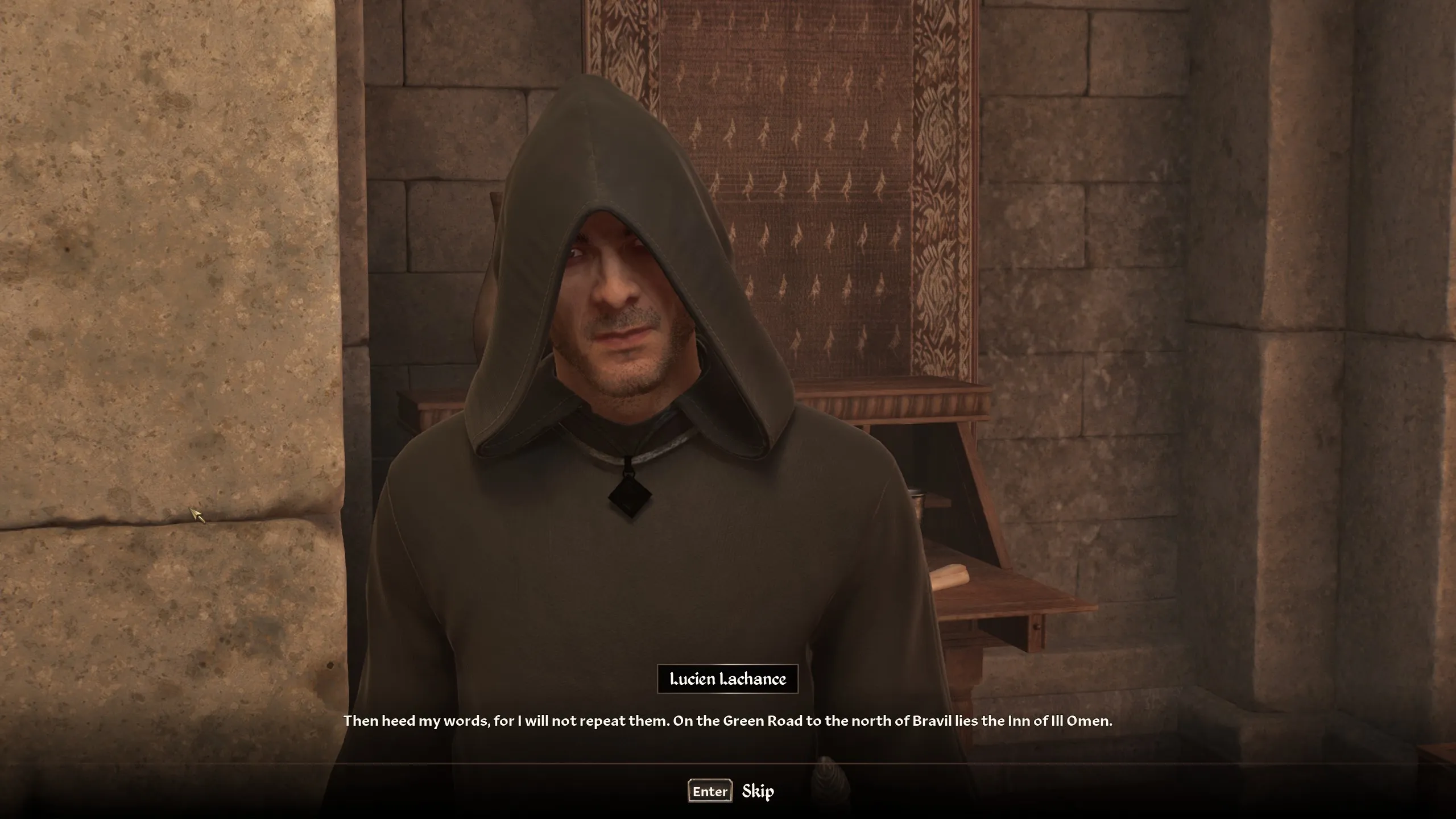The Skyblivion mod team, known for their meticulous recreation of The Elder Scrolls IV: Oblivion in Skyrim’s engine, has ironically stumbled in their quest for perfect authenticity. Despite their extraordinary attention to detail in remastering the beloved 2006 RPG classic, they’ve inadvertently altered an essential lore element from the original game’s Dark Brotherhood questline.
The error revolves around a critical texture used in one of the game’s most memorable quests. In the original Oblivion, players seeking to join the Dark Brotherhood assassin faction are required to murder an innocent NPC. After doing so, a mysterious figure approaches during the player’s next rest period, commending the killing and directing them to a remote tavern called the Inn of Ill Omen. At this inn, players must eliminate a man named Rufio. Following this assassination, the player sleeps again and is visited by Lucien Lachance, a Speaker for the Dark Brotherhood. Lachance then reveals the location of the Brotherhood’s sanctuary in Cheydinhal, which is concealed behind a nondescript black door in the city’s basement.
This seemingly ordinary door bears crucial significance in the game’s lore. When approached, it speaks to the player, asking: “What is the color of night?” The correct response—”Sanguine, my brother”—grants access to the sanctuary. The door’s austere, plain black appearance in the original game purposefully evokes a sense of secrecy and hidden menace, perfectly aligning with the clandestine nature of the Dark Brotherhood.
However, in Skyblivion’s remastered version, this door has been visually upgraded with the addition of the Dark Brotherhood’s distinctive Black Hand symbol—a significant departure from the original design. This seemingly minor visual enhancement actually contradicts established lore, as the door’s inconspicuous appearance was intentional, meant to conceal the sanctuary’s location from the general public. The slip-up was first spotted by the sharp-eyed Reddit user ZombieGrief, who pointed out that the original door’s unadorned appearance was an intentional design choice, not a limitation of 2006 graphics capabilities. The plain black door without insignias or markings allowed the Dark Brotherhood to maintain their secrecy in a public area of Cheydinhal.
This small but significant texture modification creates a logical inconsistency. As ZombieGrief astutely noted, it would be rather conspicuous for a secretive assassin’s guild to mark their hideout with their organization’s symbol—essentially equivalent to hanging a sign proclaiming “Assassins’ Guild, This Way!”. The irony isn’t lost on fans that the Skyblivion team, well-regarded for their extraordinary commitment to faithfully recreating Oblivion, has made this particular oversight. Their Oblivion remaster project has been in development for years, with team members painstakingly recreating everything from architecture to wildlife with obsessive accuracy.
The project, which aims to fully rebuild Oblivion within Skyrim’s more advanced engine, is an unofficial labor of love by dedicated fans rather than an official Bethesda release. Despite its unofficial status, it has garnered significant attention for its impressive scope and attention to detail. While this texture discrepancy might seem minor to casual players, it highlights how even the most dedicated remastering efforts can sometimes inadvertently alter small but meaningful elements of the original game’s design and lore. For hardcore Elder Scrolls fans, these details matter substantially, as they contribute to the rich world-building that has made the series so beloved.
Given the Skyblivion team’s track record of responding to community feedback, it’s possible this texture might be adjusted to more closely match the original’s lore-consistent design before the mod’s final release. The team continues to work on the massive project with no firm release date announced, allowing time for such refinements.
The Importance of Faithful Remastering
This minor controversy illustrates the delicate balance remaster projects must strike between visual enhancement and lore preservation. While improved graphics are certainly welcome, maintaining the original design intent—particularly when it serves narrative purposes—remains equally crucial for preserving the authentic experience players remember.
For now, the Dark Brotherhood door stands as a small but fascinating example of how even well-intentioned graphical improvements can sometimes inadvertently alter the carefully crafted storytelling elements of classic games. It’s a reminder that in game design, sometimes what’s not shown is just as important as what is.
